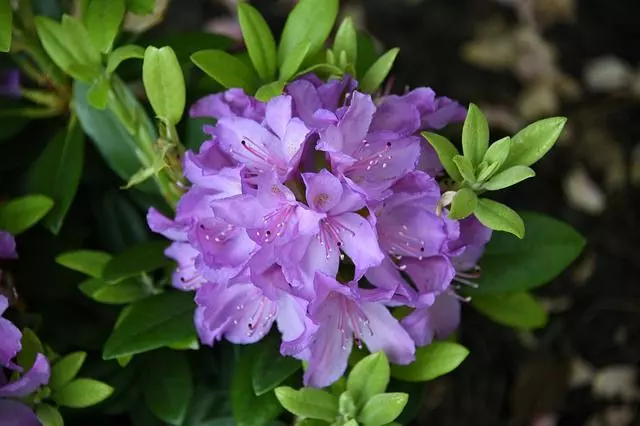Azalea is a wonderful plant and today we will show you how to plant azaleas step by step.
It combines with many other beautiful or wildflowers and can live for many years.
On the other hand, it can be considered an ornamental plant and also works as a houseplant.
Is there anything wrong with it? Yes, it is somewhat delicate.
However, with this guide, you will know everything you need to know when it comes to planting and growing your azaleas for your garden or vegetable garden.
Table of Contents
When to Plant Azaleas?
Azaleas, flowers of striking beauty are native to Japan. The months of splendor for sowing are from March to May, the time of the beautiful spring season.
In the autumn-winter period the azalea, although it blooms abundantly, should be protected in the house, away from sources of heat and direct light.
It can also be planted at the beginning of autumn, but the detail is that it will not be active in its most productive flowering period: winter.
Azalea seeds germinate in about a month, on a thin layer of sifted sphagnum moss on an acid soil mix. It needs an optimum growing temperature between 46 to 60 °F (8 to 16°C).
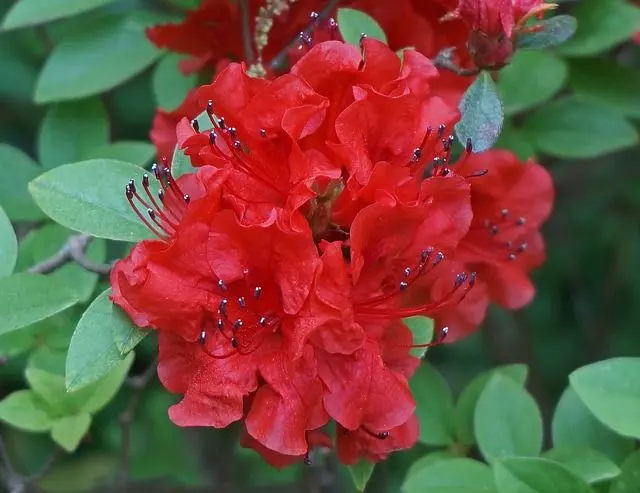
Where to Plant Azaleas?
Azaleas can be grown in pots very well prepared to always maintain the humidity of the soil or in a garden where they receive indirect sunlight since they need spaces in semi-shade or their leaves will burn.
In natural conditions, azaleas grow in the high and humid part of the mountains, where they vegetate in areas close to the course of rivers or springs, always looking for shady positions.
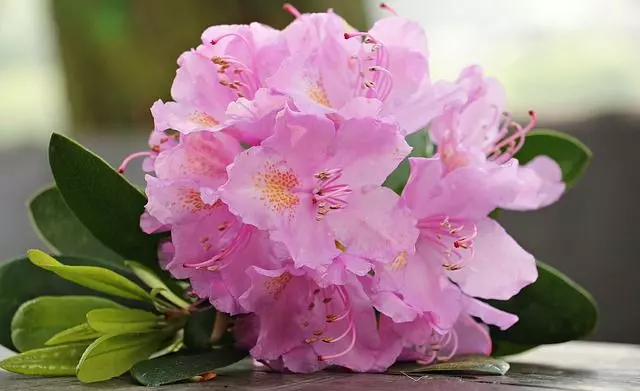
How Do We Prepare the Soil for Growing Azaleas?
But one of the keys lies in preparing a good substrate when planting azaleas.
The first thing to know is that they need an acid substrate to prevent their leaves from turning yellow and the plant from dying.
So it is necessary to ask our nursery or gardening shop for the specific substrate for azaleas. Or buy an acidity corrector.
If we are going to keep it living in pots, azaleas in this environment need a mixture of soft substrates very well ventilated, where the compounds of peat, perlite, pine needles, and moorland are equally distributed.
Why? Azaleas are very sensitive to the presence of calcium and magnesium in the soil and their reaction is immediate: their leaves turn yellow, turn ugly, fall off, and then the plant dies.
When the plants are kept in the open air, it is advisable to choose physiologically acid fertilizers such as urea and sulfates, which should be supplied in the period from spring to autumn (April to September). You can buy this substrate ideal for azaleas.
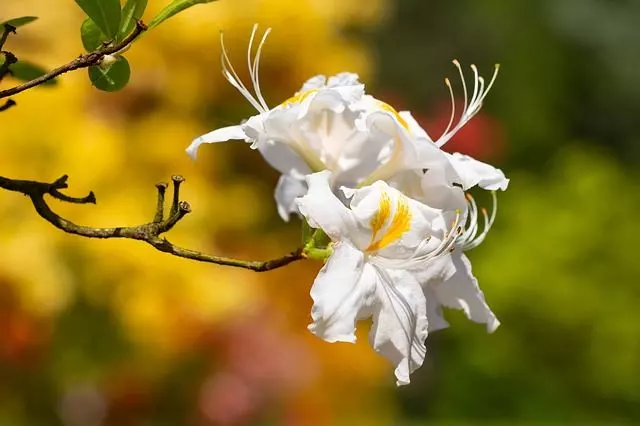
How Do We Water Azaleas?
Azaleas need a lot of non-calcareous water. Therefore, the substrate must always be moist, which is not the same as waterlogged or soaked.
If we grow them in a pot, the saucer must always contain water and this is achieved by making a layer of well-moistened gravel.
The leaves should be sprayed frequently, with a product based on Thiophanate metyl, which prevents the yellowing of the leaves, produced by the effect of the limestone in the water.
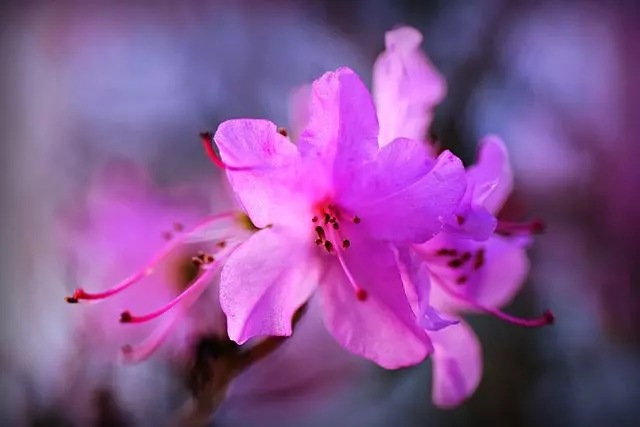
How to Plant Azaleas Step by Step
Azaleas, although always delicate in their maintenance, are resistant plants that can grow in many parts of the world.
When it comes to planting an azalea, the choice must be the best, adapted to the available space we will have to take care of it.
There are two main varieties: native azaleas, which are those that grow in bushes and do not need much care. And the Asian azaleas, which do require more attention and grow as bushes.
Asian azaleas, in turn, have two varieties that are mostly known.
These are Kurume hybrids, which are deep red and grow to a maximum of about 3 feet. And the South Indian hybrids: with magenta-pink or white colors, they grow very tall and reach the size of a door or window. They are very hardy but must be pruned regularly.
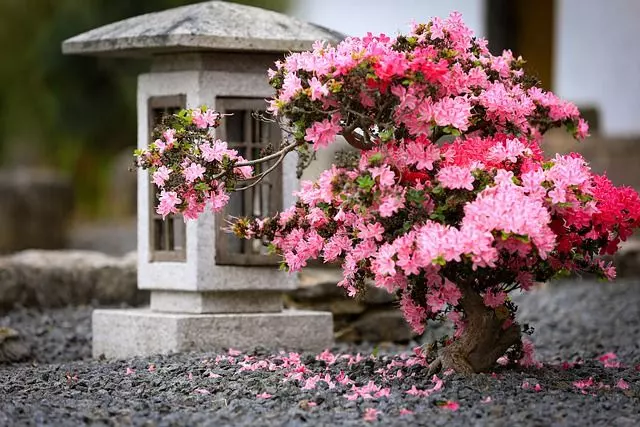
How to Plant Azaleas In 7 Steps
In the following recommendations we can follow step by step, the ideal conditions for planting and caring for azaleas:
1- Well-drained soil: azaleas require well-drained soil. A good trick is to dig a hole in your garden during the rainy season. If the water remains stagnant, it means that the soil will require special treatment, adding compost or other organic matter to loosen the soil, because it is probably very clayey.
2- Another option is to plant the azalea in a pot, where drainage is better controlled.
3- Check the acidity level of the soil: the optimum soil pH level for an azalea is 5.5-6. If the soil is too alkaline, balance it with a little sulfur before planting the azalea.
4- Dig a hole and plant the azalea: with the help of a shovel, dig the hole deep enough to bury the roots of the plant well. Pour the soil around the plant, making sure that the plant’s capillary is above ground level before planting. Before planting, it is always a good idea to moisten the plant by watering it with a hose in spray mode.
5- Watering method: Watering after sowing should be done slowly, repeating the operation a day later. At least once is the weekly frequency of watering the azalea plant if they are not exposed to direct sunlight. As we have already said, the humidity in them should always be maintained.
6- Mulch the soil around the plants: this is done with pine bark and leaves, sawdust, or wood chips between the plants. This is done to maintain uniform humidity and temperature.
7- Fertilize the azalea: when the soil is very acidic and rich, there is no need to add nutrients. But if you do, applied in spring is ideal. You can use an acid fertilizer such as a cottonseed meal.
Pests and Diseases of Azalea
You already know how to plant azaleas, now we will name the pests and pests that can make this beautiful plant sick.
Socarrina or Septoria
Flowers and leaves with brown or brown spots: the ambient temperature is sure to be very high and there is low humidity in the air. The environment should be aired and sprayed. If possible, move the plant outdoors in the evening.
This disease is known as Socarrina or Septoria. A fungicide should be applied if the attack has been massive and strong.
Phytopthora Cactorum
Dull and wilted leaves: it is caused by the fungus Phytopthora cactorum. This disease is very serious and must be attacked by eliminating the affected parts. Two or three chemical treatments with copper-based products can save your life.
Red Spider or Spider Mite
Yellowish spots on leaves: if the leaves first curl up and fall after taking on a dusty appearance, then they are most likely dotted with small spider webs on the reverse side of the leaf.
This is caused by a spider mite attack.
Cleaning the leaves one by one with a lathered cotton ball and removing all damaged leaves is the first step to kill the parasite.
This infestation should be attacked with a substantial increase in misting to restore humidity levels. If the infestation persists then chemicals should be applied.
